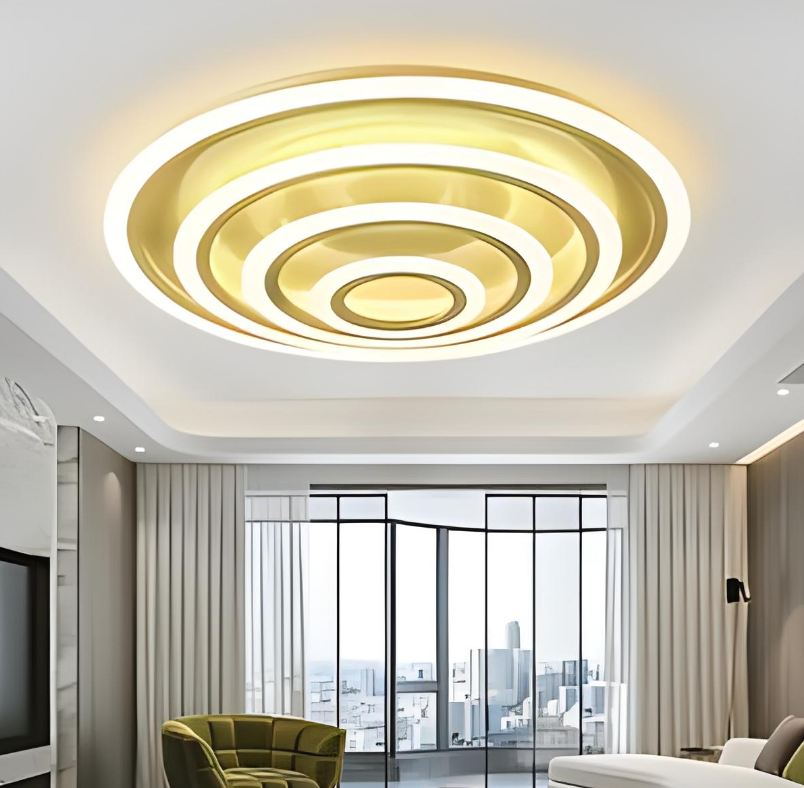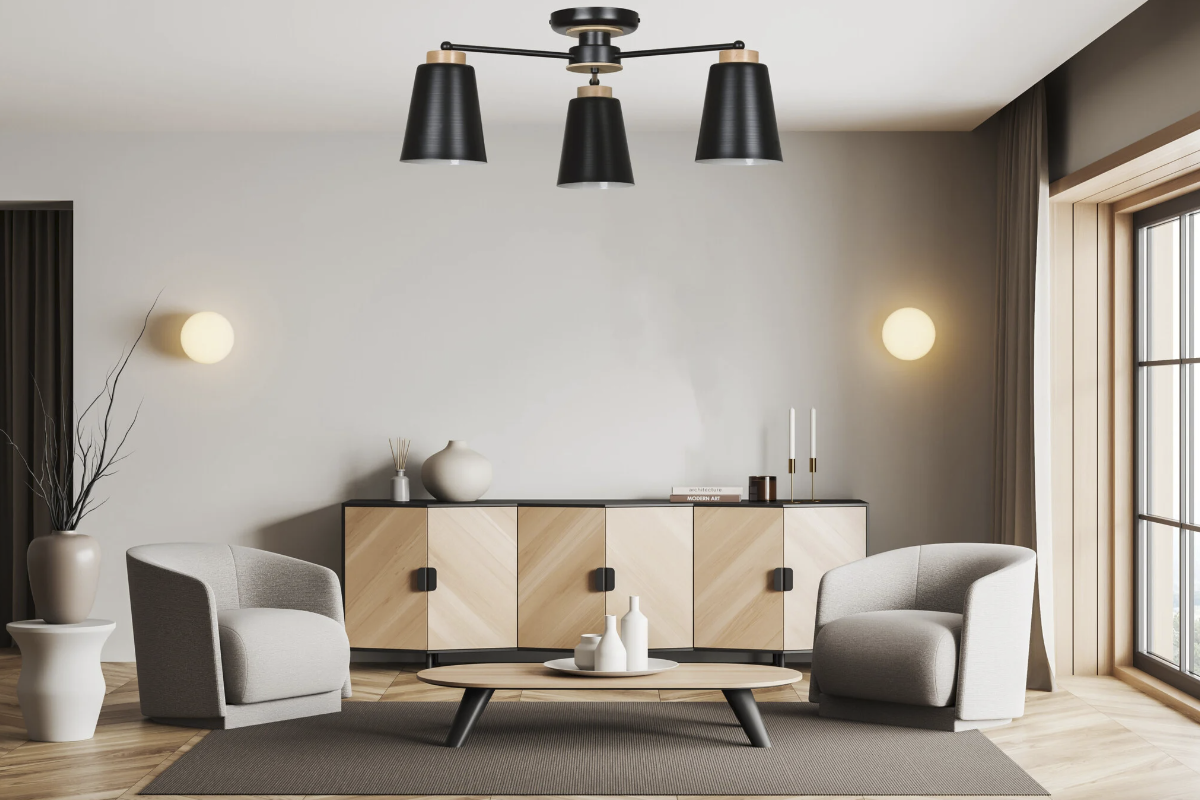Lighting is a critical component in shaping the atmosphere of any space. It has the ability to transform a room’s appearance and mood, from dull to vibrant, or from stark to inviting. Proper lighting can accentuate architectural elements, create the illusion of spaciousness, and set the desired tone for different areas of a home or building.
The functional aspects of lighting are equally important. Adequate illumination is essential for performing various tasks, from cooking and reading to working and studying. It also contributes to safety by reducing the risk of accidents and enhancing visibility in potentially hazardous areas.
In interior design, lighting Miilighting is often underestimated but plays a crucial role in achieving a balanced and harmonious environment. It affects how colors are perceived, influences spatial perception, and can highlight or downplay specific features of a room. Different types of lighting serve various purposes.
Ambient lighting provides overall illumination, task lighting focuses on specific work areas, and accent lighting draws attention to particular objects or architectural details. The combination of these lighting types creates layers that contribute to the overall ambiance and functionality of a space. When selecting ceiling lamps or other lighting fixtures, it’s important to consider factors such as the room’s purpose, existing natural light, color scheme, and desired atmosphere.
The color temperature of light bulbs, measured in Kelvins, can also significantly impact the mood of a space, with warmer tones creating a cozy feel and cooler tones promoting alertness and focus. Understanding the principles of lighting design allows for informed decisions when choosing and installing lighting fixtures, ultimately leading to more effective and aesthetically pleasing interior spaces.
Choosing the Right Ceiling Lamp for Your Space
Assessing the Room’s Size and Layout
The first step is to assess the size and layout of the room. For larger rooms with high ceilings, a statement chandelier or pendant light can make a dramatic impact, while smaller rooms may benefit from flush mount or semi-flush mount ceiling lamps that provide ample light without overwhelming the space.
Considering Style and Design Aesthetic
The style of the lamp should also complement the overall design aesthetic of the room. Whether you prefer modern, minimalist, traditional, or eclectic decor, there are ceiling lamps available in a wide range of styles to suit your taste.
Understanding Lighting Needs
In addition to size and style, it’s important to consider the type of lighting you need. Ambient lighting provides overall illumination for a room and is typically achieved with ceiling lamps. Task lighting is focused on specific areas for activities such as reading or cooking and may require adjustable or directional ceiling lamps. Accent lighting is used to highlight architectural features or artwork and can be achieved with spotlights or track lighting.
Choosing the Right Ceiling Lamp
By understanding the specific lighting needs of your space, you can choose the right ceiling lamp that not only enhances the ambiance but also serves its practical purpose. By taking these factors into account, you can choose a ceiling lamp that not only enhances the ambiance but also meets the practical lighting needs of your space.
How to Install and Position Ceiling Lamps for Maximum Effect
Installing and positioning ceiling lamps requires careful consideration to ensure maximum effect. Before installation, it’s important to determine the appropriate height at which to hang the lamp. In general, ceiling lamps should be positioned at least 7 feet above the floor to provide ample headroom and prevent glare.
For dining areas or kitchen islands, consider hanging pendant lights 30-36 inches above the surface to provide task lighting without obstructing views. When installing multiple ceiling lamps in a row, ensure they are evenly spaced and aligned with the furniture or architectural features below for a balanced and cohesive look. Proper installation also involves considering the wiring and electrical requirements of the ceiling lamp.
If you’re not experienced with electrical work, it’s best to hire a professional to ensure safety and compliance with building codes. When positioning ceiling lamps, consider the natural light sources in the room and how they will interact with artificial lighting. By strategically placing ceiling lamps near windows or skylights, you can maximize natural light during the day and supplement with artificial light as needed in the evening.
By following these installation and positioning guidelines, you can achieve maximum effect with your ceiling lamps and enhance the ambiance of your space. Installing and positioning ceiling lamps is crucial for achieving maximum effect and enhancing the ambiance of a space. Before installation, determine the appropriate height at which to hang the lamp to provide ample headroom and prevent glare.
For task lighting in dining areas or kitchen islands, consider hanging pendant lights at a specific distance above the surface to ensure functionality without obstructing views. When installing multiple ceiling lamps, ensure they are evenly spaced and aligned with furniture or architectural features for a balanced look. Proper installation also involves considering wiring and electrical requirements, so it’s best to hire a professional if you’re not experienced with electrical work.
When positioning ceiling lamps, consider natural light sources in the room and strategically place lamps near windows or skylights to maximize natural light during the day and supplement with artificial light as needed in the evening.
Using Different Styles of Ceiling Lamps to Create Different Ambiances
Different styles of ceiling lamps can create varying ambiances in a space. For a modern and minimalist look, consider sleek and simple pendant lights or flush mount fixtures with clean lines and geometric shapes. These types of lamps can create a sense of openness and airiness in a room while providing functional illumination.
Traditional or vintage-style chandeliers with ornate details and decorative elements can add a touch of elegance and sophistication to a space, making them ideal for formal dining rooms or entryways. For a more eclectic or bohemian ambiance, consider mixing different styles of ceiling lamps such as Moroccan-inspired pendants, rattan or bamboo chandeliers, or colorful glass fixtures. These unique and eye-catching lamps can add personality and character to a room while creating an inviting and relaxed atmosphere.
Industrial-style pendant lights with exposed bulbs and metal accents are perfect for creating a trendy and urban ambiance in modern lofts or industrial-inspired spaces. By choosing different styles of ceiling lamps, you can easily transform the ambiance of a room to suit your personal style and preferences. Different styles of ceiling lamps have the power to create varying ambiances in a space.
For a modern and minimalist look, sleek pendant lights or flush mount fixtures with clean lines can create a sense of openness and airiness while providing functional illumination. Traditional or vintage-style chandeliers with ornate details can add elegance and sophistication to formal spaces such as dining rooms or entryways. For a more eclectic or bohemian ambiance, mix different styles of ceiling lamps such as Moroccan-inspired pendants, rattan chandeliers, or colorful glass fixtures to add personality and character to a room.
Industrial-style pendant lights with exposed bulbs are perfect for creating a trendy urban ambiance in modern lofts or industrial-inspired spaces. By choosing different styles of ceiling lamps, you can easily transform the ambiance of a room to suit your personal style.
Incorporating Dimmer Switches and Smart Bulbs for Versatility
Incorporating dimmer switches and smart bulbs into your ceiling lamps offers versatility and control over the ambiance of your space. Dimmer switches allow you to adjust the brightness of your ceiling lamps to create different moods for various activities or times of day. Whether you’re hosting a dinner party, watching a movie, or simply relaxing with a book, dimmable ceiling lamps provide flexibility in setting the right atmosphere.
Smart bulbs take versatility to the next level by allowing you to control not only brightness but also color temperature and even create custom lighting schedules through smartphone apps or voice commands. By incorporating dimmer switches and smart bulbs into your ceiling lamps, you can easily transition from bright and energizing light during daytime tasks to soft and warm light for evening relaxation. Smart bulbs also offer energy-saving benefits by allowing you to adjust brightness levels according to natural light conditions or occupancy patterns.
With these versatile lighting options, you can effortlessly create different ambiances in your space while enhancing comfort and convenience. Incorporating dimmer switches and smart bulbs into your ceiling lamps offers versatility and control over the ambiance of your space. Dimmer switches allow you to adjust the brightness of your ceiling lamps for different activities or times of day, providing flexibility in setting the right atmosphere.
Smart bulbs take versatility to the next level by allowing you to control not only brightness but also color temperature and create custom lighting schedules through smartphone apps or voice commands. With these versatile lighting options, you can easily transition from bright and energizing light during daytime tasks to soft and warm light for evening relaxation while also enjoying energy-saving benefits by adjusting brightness levels according to natural light conditions or occupancy patterns.
DIY Ideas for Creating Unique and Enchanting Ceiling Lamps
Upcycle Everyday Objects into Unique Pendant Lights
If you’re feeling creative and want to add a personal touch to your space, consider DIY ideas for creating unique ceiling lamps. One option is to repurpose everyday objects such as baskets, mason jars, or even wine bottles into pendant lights by adding simple wiring kits and light bulbs. This not only adds character to your space but also reduces waste by giving new life to old items.
Customize Your Lampshades for a One-of-a-Kind Look
Another DIY idea is to create custom lampshades using fabric, paper, or even natural materials like bamboo or rattan for a one-of-a-kind look that reflects your personal style. For those with woodworking skills, building a wooden chandelier or pendant light from scratch can be a rewarding project that adds warmth and rustic charm to your space. You can customize the size, shape, and finish of the wood to complement your existing decor while showcasing your craftsmanship.
Add a Whimsical Touch with DIY Cloud Lights
If you’re looking for a more whimsical touch, consider creating a DIY cloud light using cotton batting or paper lanterns for a dreamy and enchanting effect that’s perfect for nurseries or playrooms. By exploring DIY ideas for creating unique ceiling lamps, you can infuse your space with creativity and personality while enjoying the satisfaction of handmade craftsmanship.
Maintenance and Care Tips for Keeping Your Ceiling Lamps Looking Dreamy
To keep your ceiling lamps looking dreamy and functioning at their best, regular maintenance and care are essential. Dusting your lamps regularly with a soft cloth or duster helps prevent dirt buildup on surfaces and maintains their appearance. For glass or crystal chandeliers, use a gentle glass cleaner applied to a microfiber cloth to remove fingerprints and smudges without leaving streaks behind.
Inspect wiring connections periodically to ensure they are secure and free from damage that could pose safety hazards. When changing light bulbs in your ceiling lamps, be sure to follow manufacturer recommendations for wattage limits and bulb types to avoid overheating or electrical issues. If your ceiling lamps have fabric shades or delicate materials, spot clean them as needed with mild soap and water to remove stains or dust accumulation without causing damage.
Lastly, consider scheduling professional cleaning services for intricate or hard-to-reach fixtures that require specialized care. By following these maintenance tips, you can preserve the beauty and functionality of your ceiling lamps for years to come. To keep your ceiling lamps looking dreamy and functioning at their best, regular maintenance is essential.
Dusting your lamps regularly helps prevent dirt buildup on surfaces while maintaining their appearance. For glass or crystal chandeliers, use gentle glass cleaner applied to a microfiber cloth to remove fingerprints without leaving streaks behind. Inspect wiring connections periodically to ensure they are secure and free from damage that could pose safety hazards.
When changing light bulbs in your ceiling lamps, follow manufacturer recommendations for wattage limits and bulb types to avoid overheating or electrical issues. Spot clean fabric shades as needed with mild soap and water without causing damage while considering professional cleaning services for intricate fixtures that require specialized care. By following these maintenance tips, you can preserve the beauty and functionality of your ceiling lamps for years to come.
In conclusion, lighting plays an essential role in creating ambiance within a space by setting the mood and providing functional illumination for everyday activities. When choosing ceiling lamps for your home, consider factors such as size, style, and type of lighting needed to enhance both ambiance and practicality within each room. Proper installation and positioning of ceiling lamps are crucial for achieving maximum effect while incorporating different styles can create varying ambiances based on personal preferences.
By incorporating dimmer switches and smart bulbs into your ceiling lamps offers versatility in controlling brightness levels according to natural light conditions or occupancy patterns while exploring DIY ideas allows infusing creativity into personal spaces through unique handmade craftsmanship.
Regular maintenance is essential for preserving both beauty and functionality within each ceiling lamp by following manufacturer recommendations for cleaning delicate materials without causing damage while considering professional cleaning services when necessary.
By understanding these key aspects related to ceiling lamps within interior design settings allows making informed decisions when selecting installing maintaining each fixture within personal spaces.



